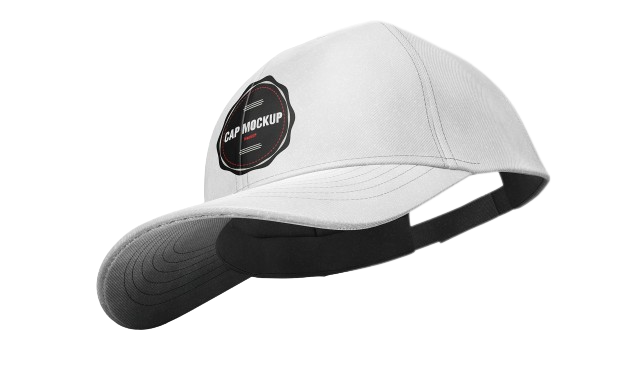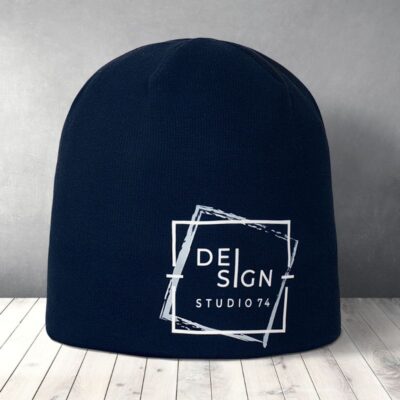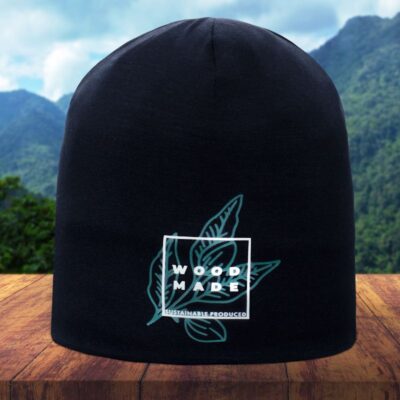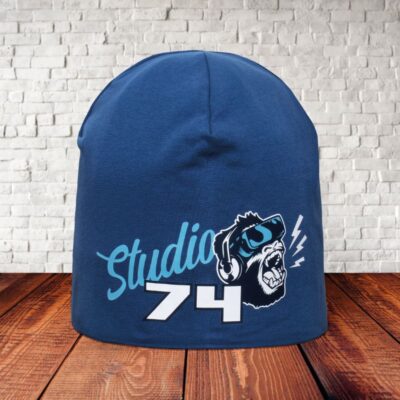prints
Promotional caps are popular marketing tools that can be personalized according to the needs of companies. There are many different types of embellishments that can be used on promotional caps to attract attention and make your brand stand out. One of the popular decoration techniques and often used are various types of prints that can be made using various techniques.
The two most common printing techniques we use, and also the most popular among our customers, are: screen printing thermal transfer and DTF. Reflective prints are also very popular, especially in the autumn and winter.
Screen printing thermal transfer:
Screen printing thermal transfer is a printing process that uses special printed paper or foil to transfer the design to a target surface, e.g. fabric. This process uses heat and pressure to transfer the ink or dye from the paper or film to the fabric, creating a durable and abrasion-resistant pattern.
Screen printing thermal transfer is often used for printing on clothing, including advertising caps. This is one of the most popular methods of printing on synthetic materials, due to the speed and ease of implementation, as well as the durability and quality of the print obtained.
The advantages of printing with the screen printing thermal transfer technique are:
- High print quality – thermal transfer screen printing offers very good print quality, which is durable and resistant to abrasion.
- Wide range of applications – This technique can be used to print on many different surfaces, such as fabrics, plastic, paper and many other materials.
- High efficiency – the printing process is relatively quick and easy to perform, which allows you to print a large number of products in a short time.
- Ability to print multiple colors – with this technique, you can print in multiple colors, which allows you to perform more complex projects.
- Low production costs – thermal transfer screen printing offers relatively low production costs compared to other printing methods.
All in all, thermal transfer screen printing is a popular printing technique with many advantages and disadvantages. It is worth paying attention to the needs and specificity of the project in order to choose the appropriate printing technique.
Examples of advertising caps with print
DTF (Direct to Film):
DTF (Direct to Film) printing is a digital printing technique that involves direct application of graphics to a special transfer foil, and then transferring it to the surface of fabric or other material. DTF printing uses a special DTF ink, which, when applied to the transfer foil, is cured by heat.
The DTF printing process begins with the preparation of a graphic design, which is then printed directly on the transfer foil using a digital printer. The printed film is then applied to the surface to be printed and the whole thing is subjected to a hot heat press. Under the influence of heat, the paint hardens and the foil adheres to the fabric, creating a durable and expressive print.
DTF printing is characterized by high precision, accuracy and color clarity. This technique allows for printing complex patterns and graphics, as well as applying prints on various types of fabrics and other surfaces. DTF printing is becoming more and more popular among clothing manufacturers, especially in the case of high-volume printing.
DTF (Direct to Film) printing has several advantages that attract clothing manufacturers and customers who want to personalize their products. Here are some of the most important advantages of DTF printing:
- High quality of printing: DTF enables printing very clear and accurate images, thanks to which the print looks very aesthetic and professional.
- Multi-layer print: DTF allows you to print multi-layer prints that look very effective and do not lose quality, even with complex patterns.
- High durability: DTF inks are very durable and resistant to abrasion, which means that the print remains in good condition for a long time.
- Wide range of applications: DTF can be used to print on various types of fabrics and other surfaces, giving it great flexibility and variety of applications.
- Low price for high volumes: DTF is very cost effective for high volume printing, making it an attractive option for apparel manufacturers.
- Fast turnaround time: DTF allows for fast printing, allowing garment manufacturers to complete large orders in a short time.
DTF printing is becoming more and more popular among clothing manufacturers and customers who are looking for high-quality personalization of clothes.
Certified reflective prints:
Certified reflective printing is a type of printing that has been tested and approved by the relevant certification bodies to meet the requirements of reflective safety. Reflective printing is especially important for people who work or travel on the roads at night, as it allows you to increase their visibility and improve safety.
Certain standards must be met in order to obtain a retroreflectivity certification for a print. Depending on the country, these standards may be different, e.g. in Europe the EN ISO 20471 standard is used, in North America the ANSI/ISEA 107 standard is used. These standards define the requirements for colors, strength and reflectivity of materials, including reflective prints .
The certified reflective print is used on various types of protective clothing, including advertising caps.
It is worth noting that a reflective print does not always have to be certified, but obtaining a certificate is a guarantee that the print meets the requirements of reflective safety and is suitable for use on protective clothing.
Reflective printing film is a special film that is used to produce reflective prints on various materials such as fabrics, leather, PVC films and others.
Reflective printing foil is made of tiny glass beads or microscopic perforations that reflect light and create a reflective effect. This film is available in a variety of colors including white, yellow, orange, red and green, allowing you to create reflective prints in a variety of patterns and colors.
The printing process on reflective foil is similar to the printing process on ordinary transfer foils. The print is printed on the foil using a special printer with reflective inks, and then transferred to the material using a heat press or iron.
Reflective prints on the film are widely used in the production of protective clothing, as well as in advertising, road signs, warning signs and other products that require an additional level of visibility and safety.
It is worth noting that foil for reflective printing can only be used on materials that meet the relevant standards of reflective safety, so before choosing a foil, make sure that the material on which it will be used is suitable for this type of printing.
Examples of advertising caps with print
To sum up, prints on advertising caps are a popular decoration technique that allows the cap to be used as an advertising medium. They are made in different ways and allow you to apply various graphic elements to the cap. Printed advertising caps are a practical and useful promotional gadget that enables effective advertising of a company or event on a daily basis.








